#Aquatic reptiles
Text
Another Mattel Jurassic World Fossil Fighters repaint. This time it's plesio. Super happy with how this one turned out. I have always loved thr stary design that this particular vivosaur has. As always I hate working with yellows.

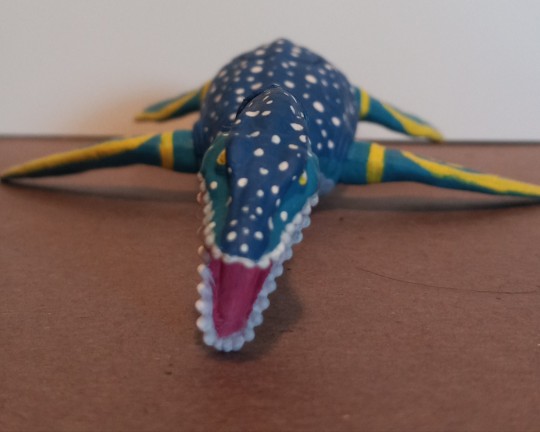
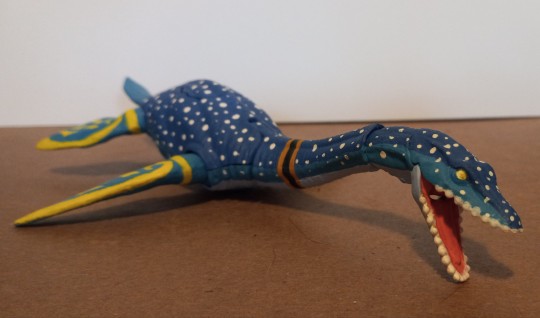
#fossil fighters#fossil fighters champions#repaint#not dinosaurs#reptiles#aquatic reptiles#plesiosaur#vallejo paint#vivosaur#mattel jurassic world#jurassic park#jurassic world#my art
89 notes
·
View notes
Text
Aquatic Reptile Character Poll
Alright so I apologize for not giving enough time on the last poll (I was tired and only gave you all one day as opposed to a week) so I may include another poll at the end. So what kind of aquatic reptile should I write?
@bloobluebloo @standingpillar @doveghost @asordidbarwere @stoneshrike
#poll#furry#furry anthro#scalie#scalie furry#writing#creative writing#writeblr#polls are fun#character poll#reptiles#aquatic reptiles#reptiles are cool#turtles#crocodillian#crocodiles#alligator#caiman#water snakes#basilisk#iguana#monitor
11 notes
·
View notes
Text

Nothosaurus: “I know I have the body but of a strong and swift reptile; but I have the heart and stomach of a fish!👑
🦎🌊
#history#nothosaurus#reptile#jurassic world#jw#camp cretaceous#prehistoric animals#extinct#fossils#paleontology#jurassic world camp cretaceous#jurassic park fan#plesiosaur#triassic#aquatic reptiles#extinct animals#prehistoric#nickys facts
115 notes
·
View notes
Text

This is currently a work in progress. Got to do the shading and delete the underlines. But I may as well ask those paleontologist folks if I did this Liopleurodon correctly. I have never drawn a Pliosauridae or any sort of marine reptile. So I'm wondering if I got this predators proportions correctly. I at least tried to get the teeth count correct. Also I'm assuming clams are old enough to have existed. But please tell me if they didn't, so I can switch it out for something more appropriate.
3 notes
·
View notes
Text


King of clubs
#king of clubs#clubs#spinosaurus#dinosaurs#aquatic reptiles#aquatic animals#prehistoric reptiles#animals#playing card#playing cards
0 notes
Text
The large compound island of New Guinea, and adjacent, tropical areas of Australia, are home to a remarkable turtle species, that is an outlier in at least four ways - its lack of close living relatives, its location, and its locomotion. This is the pig nosed or Fly River softshell turtle, also known as the pitted shell turtle, and Carettochelys insculpta. This curious freshwater turtle is now a common zoo exhibit, and occurs in the pet trade especially as cute juveniles, although it's size and cruising habit, make it problematic as a pet turtle. Fortunately care of C. insculpta is very well understood, and not problematic other than their requirement for living space.
C. insculpta is the only living Catettochelys species that is recognized. Very large individuals of this species reportedly have a carapace length of nearly 60 centimeters, or 24 inches. Yet more commonly they are around 25 centimeters, or 14 inches. In New Guinea this species is found only in the southern lowlands of the island, whereas in Australia it is found in Northern Territory. The exact distribution of C. insculpta is uncertain as regards both New Guinea and Australia, but the species is limited to the tropics.
The size of T. insculpta varies by geographical origin, with those from the Kikori area weighing 10 kilograms more than those from the Daly River. In spite of this, no morphological evidence has been presented to justify supposed subspecies distinctions. The great similarity between New Guinea and Northern Territory Carettochelys turtles, and their limited Australian distribution, indicate they dispersed to Australia from New Guinea at some time during the Quarternary.
Carettochelys are found in rivers and streams with soft bottoms and slow currents. Such habitats are rich in leaf litter and wood debris. They are also present in still water bodies in New Guinea. Hatchling Carettochelys can be found in New Guinea river deltas, but as adults they are migrated upstream. Australian populations do not frequent estuaries at all, and are thus more strictly freshwater. These Australian Catettochelys have more habitat available in the wet season, when they are able to move into nearby creeks, and exploit flooded floodplain environments.
Oftentimes people object that Caretrochelys are not true softshells, on the grounds that they are not members of the trionychid clade, that is named for Trionyx, an African softshell turtle. But Catettochelys is their definite sister, and together with the trionychids, they comprise the clade Trionychia. The first trionychians were already softshells, and the morphological status as softshell is inherited by both Carettochelys and its trionychid sisters.
The presence of a northern type turtle, like Catettochelys, in the Australasian realm is a bit of an enigma. Although there are no longer native carettochelyids in the northern hemisphere today, ancestral carettochelyids during the Eocene epoch, appear to have exclusively inhabited northern continents. Therefore ancestral Catettochelys must have reached island Australasia prior to their extinction in Asia. It is not known when carettochelyids arrived in Australasia, and there is currently only one species.
Some other New Guinea turtles, that are members of the trionychid group, are also of Asian affinities. All other Quarternary turtles in New Guinea and Australia, are either pleurodires or meiolaniids. Both these clades are descended from ancestors that were present since the breakup of Gondwana in the Cretaceous and Early Palaeogene. Northern type turtles in Australasia are much more recent arrivals in Australasia, and they are limited to the northern continental mainlands.
Australia has a well deserved reputation for her unique animal life, having evolved in isolation from those of their inhabited continents. However her isolation has not been total, and as she has been carried north towards Asia by forces below the earth's shallow crust, new kinds of animals have arrived on her shores from Asia, including murid rodents, and agamid and varanid lizards.
Although the biota and ecology of Australasia is distinct from that of Asia today, there is overlap between the animal and plant life of these continents, despite the lack of land connections between the continental masses of 'Sundaland' and 'Sahulland'. In fact the climate is an effective barrier, with drier and more season climates in eastern Indonesia, working with the sea to separate the rainforests on the Sunda shelf from those on New Guinea.
Climate zones within Australia largely limit New Guinean faunal and floral components, which include more Asiatic elements than those of Australia, to the north of Australia. The fauna and flora of which, cannot easily be demarcated apart from those of southern New Guinea. Indeed two land bridges across the present Torres Strait, had connected the island continents during the Pleistocene, during which time the sea levels were lower, allowing migration between what are now discontinuous land masses.
Although Catettochelys is unrelated to Holocene sea turtles, it swims with an unusual motion intermediate between the fore and aft rowing of typical, plesiopodal freshwater turtles, such as the red eared slider, and hydropodal sea turtles that swim by employing vertical strokes, or underwater flight. Like the sea turtles, Catettochelys makes more use of its deltoideus muscle in its swimming stroke, creating better forces of lift that facilitate pelagic abilities.
These turtles are quite catholic omnivores, consuming both plant and animal food resources, but their feeding habits become increasingly vegetarian as they mature. They feed extensively on tropical fruits such as Ficus, Sonneratia, and Nypa, that fall into the water where Carettochelys feed, and they also consume a broader diversity of waterside and aquatic plant material, such as the eelgrass Valisneria and algae.
Their aquarium diet should therefore include algae wafers and fresh fruits and vegetables, such as banana, melon, and lettuce. Dried preparations can be fed to these turtles, but it is much preferable to choose those with a rather low protein content. Usually they prefer to eat at the bottom so sinking pellets are a better choice than floating sticks. They will also readily eat defrosted and fresh meaty items. Respecting their omnivory, their diet should be varied and its vegetable component should make up about 2/3 of the diet of adult Carettochelys.
The animal prey that are consumed by Carettochelys are benthic and slow moving, including snails and crayfishes. Therefore these turtles are not suited for sharing an environment with hard shelled potential prey. They are also likely also to consume some aquarium plants. Vertebrates are said only to be eaten as carrion, but opportunistic predation on small, slow or sleeping fish cannot be excluded, because this is normal benthivorous turtle behavior.
Although they are active and efficient midwater swimmers, Carettochelys are foragers and not hunters. Fishes that are significantly larger than their heads will be safe. This species is also peaceable towards other turtles, and is often housed in zoos alongside Australasian pleurodires, of the genera Chelodina, Elseya, and Emydura. Indeed Catettochelys is by now a very popular species in mixed species exhibits, having a good tolerance of other animals, and being much easier to accommodate than are marine turtles.
Im spite of this overall good tolerance, Carettochelys males can actually be aggressive to one another, and in horny condition can harass females with tail biting behavior. Rarely males can be aggressive towards other turtle species, and even fish sharing their environment, but this is a statistical tail end effect, and cannot be considered typical. Usually it is sufficient not to cohabit two males together.
The morphology of the Catettochelys humerus is most similar to that of the trionychids, yet it's shape is convergent upon that of sea turtles. Overall the forelimbs are more efficient hydrofoils than is normal for a freshwater turtle, although they still walk and swim using an alternate coordination of all four limbs, despite being well capable of a graceful, penguin-like underwater flight using the forelimbs alone.
Compared to the trionychid sister clade, Catettochelys possesses elongated autopodia, making the forelimb a functioning underwater 'wing'. This elongation is already described in the extinct, northern hemisphere carettochelyids, but it is thought to be unique among all of the non-marine turtles. The swimming style of Carettochelys gives it an advantage when competing against pleurodire turtles, because it is useful for finding food in low energy environments. The mystery is why no turtles swim like this today, in the tropical rivers of the Congo, Amazonia, or Southeast Asia.
Catettochelys even possesses salt glands, but they are degenerated, like those of the gharial Gavialis, a riverine crocodilian descended from marine ancestors. However it is not resident in brackish environments as an adult, and should be regarded as a truly freshwater turtle. This species visits estuaries only to nest on sandbanks, before returning upstream as they grow. Some Carettochelys juveniles reside in brackish water with salinities up to 21 ppt, or a specific gravity of 1.015.
Often animals and plants that outlive their relatives, in the sense of the geological timescale, have shifted to novel environments. Like the gharial, and the South Asian, Chinese, and Amazon river 'dolphins', of middle Cenozoic origins, Carettochelys appears to represent the phenomenon of atypical, freshwater subclades surviving longer that their marine cousins.
Depending on the location and the time of the year, Carettochelys in the wild may experience an approximate spectrum of pH from 6.5 to 8.5, although the average pH in the river channels is surely 7 to 8. During the wet months, when Catettochelys make use of flooding to access the floodplain, the water pH is lower, despite the strange but widely circulated claim online, that Catettochelys requires hard, alkaline water parameters.
The water temperature in river channel environments is in the middle and upper 20s degrees centigrade. In floodplain habitats the temperature may seasonally reach the upper 30s. If they are maintained at brackish salinities, which is not necessary, the specific gravity should not reach 1.02, and they will still need to drink freshwater, as do marine snakes and birds with functioning salt glands, that still drink rainwater.
#Carettochelys insculpta#pig nosed softshell turtle#pig nosed turtle#Fly River softshell turtle#Fly River turtle#pitted shell turtle#aquatic reptiles#aquatic turtles#tankbusters#freshwater turtles
0 notes
Text

By the sea. //ft @dakotas-world2!
🌊🐢🌞🔥
#my art#i wanted to draw more of her#cute girl heheh blushes#art#digital art#furry#oc#anthro#fursona#illustration#turtle#scalie#sea turtle#aquatic#reptile#beach#vibes#warm#soft#art for others
508 notes
·
View notes
Text

Makuta Spleco
He took the name Silver Fish literally.
Source
Creator: DerpSpawn
#lego#bionicle#armor#armor plates#makuta#brotherhood of makuta#living#living armor#darkness#shadow#shadow demon#amphibian#silver#metal#metallic#reptile#reptillian#amphibious#fish#aquatic#tail#long#ling tail#fish tail#fins
173 notes
·
View notes
Text
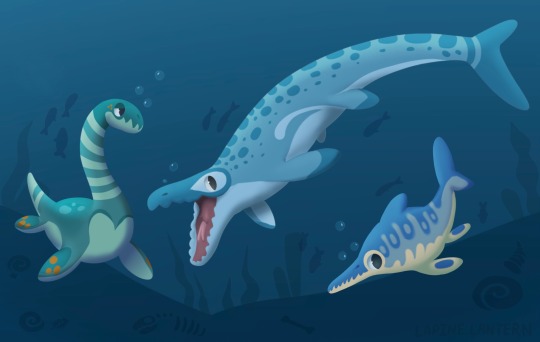
Been playing paleo pines and I WANNA WORK FOR THE CREATORS ITS SO CUTE
#paleo pines#paleoart#paleo concept#character design#dinosaur#lapine lantern#my art#icthyosaur#mosasaurus#plesiosaur#aquatic reptiles appreciation#prehistoric zoology
579 notes
·
View notes
Text
Flocking doodles!
Qianzhousaurus eating hot chip and lie
Yezoteuthis catching a baby mosasaur
Shastasaurus trying to break the shell of an ammonite
Ptychodus showing off it's weird ass teeth


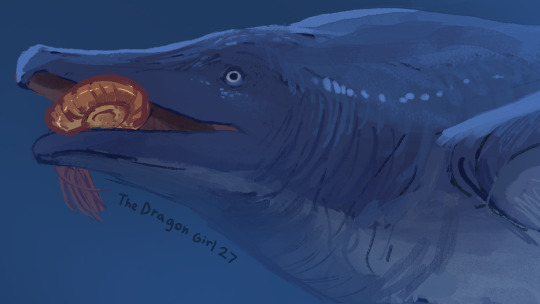
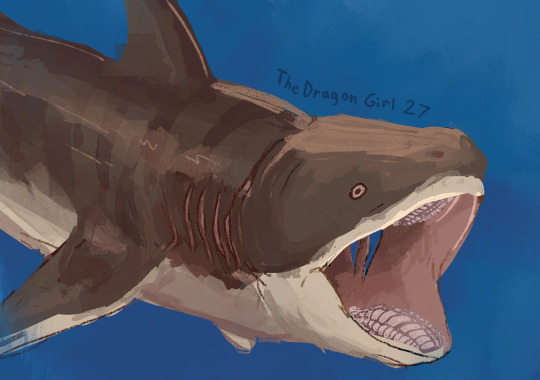
#paleoart#paleostream#Qianzhousaurus#theropod#dinosaur#Yezoteuthis#cephalopod#Shastasaurus#Ichthyosaur#reptile#Ptychodus#shark#fish#dragon draws creatures#lots of aquatic things this week#i learned today i have no idea how to draw squids#any Theropod born after Cretaceous can’t cook… all they know is mcdonald’s charge they phone be bisexual eat hot chip & lie#yes the bisexual lighting on the Qianzhousaurus was intentional i think it turned out very nice
174 notes
·
View notes
Text

The recently described mosasaur Jormungandr walhallaensis (what a name!) surfaces to observe an unfortunate young tyrannosaur adrift on a vegetation raft
#my art#paleoart#sciart#jormungandr#walhallaensis#mosasaur#cretaceous#north america#carnivore#marine reptile#paleontology#squamata#extinct#tyrannosaur#nature#ocean#aquatic
329 notes
·
View notes
Text

pov you check the lab at 3 am
A redraw of an olddd character of mine, because I could never draw her properly for whatever reason and I finally did this time.
Love her to death, her name is Suri and she's a workaholic researcher that temporarily fostered Darkey when she was little :) (the lil mug is from her, she held onto it)
#my art#digital art#oc#anthro#original character#scalie#furry art#artists on tumblr#oc art#amphibious#aquatic#reptile
52 notes
·
View notes
Text
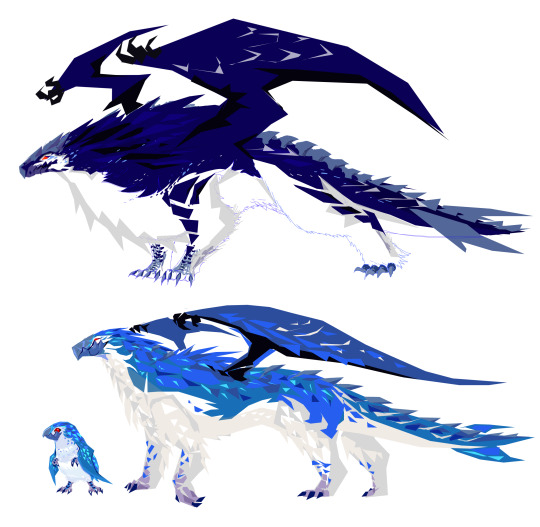
Winter Dragon
One of my dragon designs, this one is based after a mix of fairy penguins and polar bears 🐧 🐻❄️
(And is one of my personal favourites!)
#dragon#digital art#digital illustration#creature#aesthetic#colorful#art#penguin#polar bear#dragon art#reptile#fantasy#blue#aquatic
189 notes
·
View notes
Text



Snapping Turtle
(December 1, 2022)
#2022#Afternoon#Aqua#Aquarium#Aquatic#December#December 2022#Glass#My Photo#My Photography#My Pic#My Picture#Pebble#Pebbles#Photo#Photography#Pic#Picture#Reflect#Reflecting#Reflection#Reflections#Reptile#Reptile Photography#Rock#Rocks#Snapping Turtle#Turtle#Water#Water Reflection
73 notes
·
View notes
Text
Uncharismatic Fact of the Day
Despite their misleading name, most coral snakes live on land-- with the exception of the aquatic coral snake! This species has adapted itself well to an aquatic life, and is often found swimming in rivers, swamps, and ponds in the Amazon Rainforest.
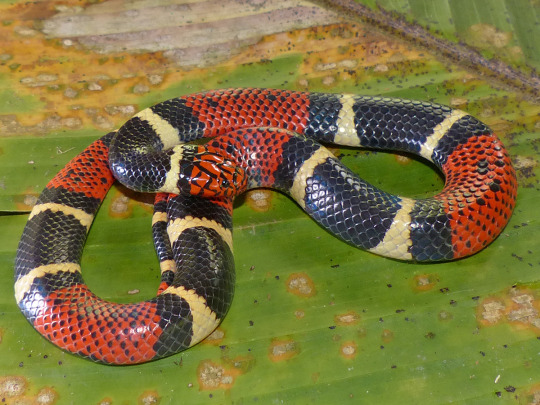
(Image: An aquatic coral snake (Micrurus surinamensis) by Mike Pingleton)
If you like what I do, consider leaving me a ko-fi!
#aquatic coral snake#Squamata#Serpentes#Elapidae#coral snakes#snakes#serpents#squamates#reptiles#uncharismatic facts
69 notes
·
View notes
Text
Although it is surely not the most world famous snake, Erpeton tentaculatum, the tentacled snake of Southeast Asia, is the most visually and behaviorally identifiable. The most obvious features of the tentacled snake are its namesake, paired facial structures of a sensory nature. E. tentaculatum is the only recognized species in the genus Erpeton, which is furthermore very unusual for its remarkably high degree of aquatic specializations, despite its being a non-marine tetrapod. Its sensory adaptations to life underwater have parallels in the two clades of elapid sea snakes, but Erpeton takes them to a further extreme. E. tentaculatum grows up to 50 to 90 centimeters, or 20 to 36 inches.
Although Erpeton possesses venom, it is not at all dangerous to man, and its venom glands are in fact small and poorly developed, relative to those of related, amphibious snakes. When E. tentaculatum are handled, their response is not to bite in self-defence, but rather to stiffen themselves and, presumably, attempt to mimic a piece of stiff, dead wood. They also maintain a curiously rather stiff posture as they wait for prey. This serves to avoid being detected themselves as they lurk hungrily.
Wild, E. tentaculatum inhabits ponds, lakes, ditches, rice paddies, and other stagnant to slow moving waters. Murkiness of the water is preferred by this slow moving ambush predator, and ideal habitats for this snake also feature substantial amounts of emergent or submergent vegetation. These offer E. tentaculatum good camouflage, as it mimics the motion of the plants in the water. Some of the habitats where E. tentaculatum is found are mildly brackish, however this snake cannot efficiently excrete excess salt, unlike some of its relatives, and it is thus a freshwater species that should not be housed in brackish conditions, without access to freshwater for drinking.
Erpeton is currently a monotypic genus, but nests within a clade of mostly semi-aquatic Asian snakes, named the homalopsid or mud snakes. Specifically, Erpeton is closely related to the fellow homalopsid genera, Enhydris, Cerberus and Homalopsis. E. tentaculatum takes aquatic specialisations to such an extreme, that it is virtually unable to slither when it is placed out of the water, which is more typical of marine than of freshwater snakes. Like seahorses, E. tentaculatum is able to anchor itself to submerged objects, using its prehensile tail, something that is quite a rarity among aquatic vertebrates, and expected more of an arboreal reptile than an aquatic one.
E. tentaculatum has unusual feeding behaviors, that are enabled by the most visually striking attribute of this snake, the paired facial structure. The species in the wild has a habitat preference for strongly discolored water, with poor visibility. Where the water is less turbid than is the optimum for their hunting, they are more nocturnal, although they are capable of hunting by eyesight during the day, using their dorsally oriented eyes. Whereas the facial tentacles are highly sensitive to the water movements that cue this snake to strike laterally, rather than frontally, and only at very close range, an enhanced sensory perception giving it an advantage over other fish-eating snakes. Sea snakes, sea kraits, and file snakes also have adaptations allowing enhanced mechanosensory perception underwater.
Captive observation does not bear out claims, that E. tentaculatum consumes adult frogs or aquatic plants, although the latter claim, however counterintuitive it might be, is still repeated in media sources of herpetocultural, aquarist, and even zoological natures. It is indeed difficult to see how this snake might consume them, considering its morphological specialisation, to swallowing only objects of only certain shapes and sizes. Any ingestion of algae or macrophytes by Erpeton, appears to be purely accidental. Erpeton also allows algae to grow on its body, contributing to the camouflage of the hunter, which may be how the snake can approach prey undetected, when it is present in less turbid waters where light more easily penetrates.
Erpeton tentaculatum have a reputation as difficult to keep in aquaria, for the reason that their striking response is triggered by the motion of a fish performing what is called a 'C-start' - a motion of darting away as soon as it senses the predator. Thus E. tentaculatum are said to need live prey, and of only a certain size. Contrary to popular ideas about tentacled snakes, E. tentaculatum can learn to accept captive diets of small, defrosted fish, as at Chester Zoo. When trying to train them, it helps to simulate the 'C-start' motion of a terrified prey fish, by moving a defrosted food item, as one would when training ribbon eels, which have a similar instinct to strike at fish as they prepare to escape.
The positive side to the strange specialization of E. tentaculatum, is that a great many fish species are large enough to be cohabited safely, with this perplexing snake species. Sadly E. tentaculatum succumbs readily, in home and public aquaria, to fungal and bacterial infections. Tannins in the aquarium water assist in preventing such infections. In the shallows of Tonle Sap, a silty lake where E. tentaculatum flourishes, the pH is probably around 5 to 7.5. At Tonle Sap throughout the year, the water temperature is 22 to 30 degrees centigrade.
Because of its habit of clinging to available items, E. tentaculatum requires elements in the aquascape that it may conveniently grasp with its tail alone. Tall growing, living plants are very appreciated and will allow the snakes to anchor themselves to form an inverted, 'J-shaped' body posture. Because E. tentaculatum is a truly aquatic tetrapod, it does not need, and will not be able to use, any terrestrial portion of an aquaterrarium setup. There is also no point in providing a basking light, and the substrate at the bottom of the aquarium is unimportant.
1 note
·
View note